Japanese
| 2001 USA-Germany Travel Record |
October 9, 2001: The first visit to Germany
After we arrived at Bielefeld and welcomed by Mr. Klaus and his friend Ms. Kaeko, we started to look around nearby downtown of Herford by Klaus's car. By looking lattice timberworks of the houses with triangular red roofs, I realized that I was delighted to find myself on a street in a German town. A statue standing in a square tells that the town was once a member of Hanseatic League. The cloth merchant still counts golden coins on the stand.
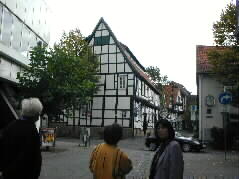
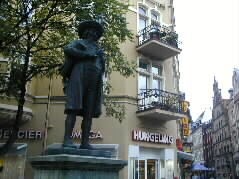
Germany has many cures everywhere throughout the country. They use them for medical treatments. In our homeland Oita, people from Yufuin and Naoiri villages had visited them and learned new utilization of cures. I found an unusual wall in Bad Salzflen. The wall is made of countless twigs making a massive wall with 10-meter high and three-meter width. Seawater is poured from the top of the wall to produce salt-enriched air passing through the wall. People walk around the downstream of the wall to inhale the air from nose, hold it in lung for a while and then exhale from mouth. The air is effective for those who have air tube disease or cold.
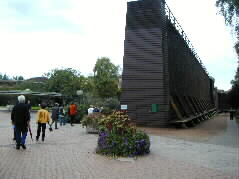
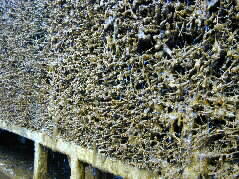
There is a coach tour in the cure park.
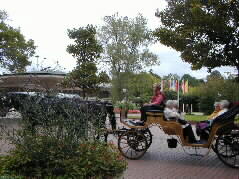
The source of the cure water gushes up from 700-meter depth underground.
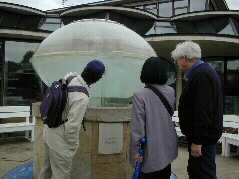
A patient gets a medical instruction from the doctor and cures the disease using insurance system. It takes at least three weeks to recover from the disease. This is why many people quietly walk around the park by alone. There are many entertainment facilities in the cure park such as dance hall and shopping for the patients. I enjoyed shopping without the least delay.
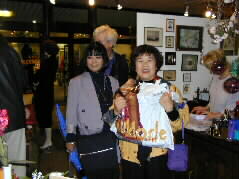
After the pleasant shopping in an apparel shop, we looked around the stone-paved streets of the beautiful park decorated with autumnal colored foliage and people enjoying walking. The park itself cures me. After a while we headed to a hotel called Am Kurpark Bad Oeynhausen Mercure Hotel. The hotel annexes a cure facility as well.
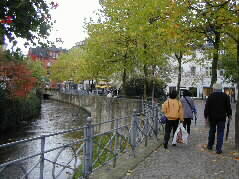
After check-in, Klaus and Kaeko picked us up from the room for dinner.
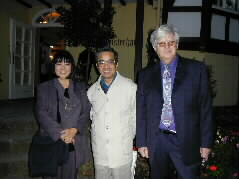
We came up to a good restaurant in which Kaeko had a good memory of her friend's birthday dinner. There were no guests, however, because we came up here too early in the evening. Kaeko said that people start dinner after around eight. I asked Klaus and Kaeko to choose German-like dish. We all took a different dish and shared them. All dishes wee really tasty, but they were also very hefty for me. On the left is sausage dish and onion cake on the right.
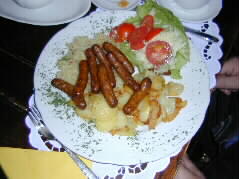
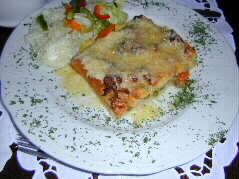
Vinegary herring with sour cream (left) and assorted selections of mushroom (right), both of them are the seasonal food in autumn. Baked potato was also tasty.
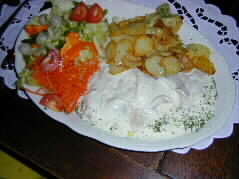
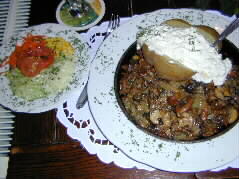
The drink was local beer, of course, and season-limited raw wine "Federweisser"
with a slight white turbidity. The aroma was a little bit strong just like
unrefined sake.
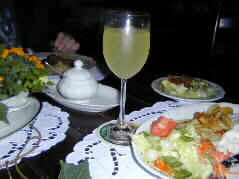
After the dinner, we visited Kaeko's spacious apartment in Lohne. She welcomed us with homemade canape and champagne.
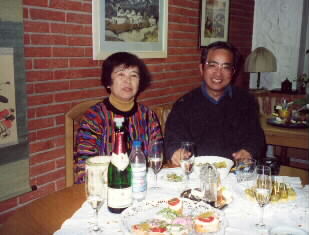
Klaus showed us his writing. He is a prominent linguist whose life work
is the study of Lappish. He said he was approaching completion of making
a German-Lappish dictionary after intensive work for more than two decades.
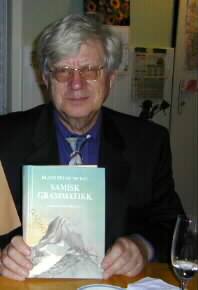 This is one of his works, a grammar of Lappish. He completed it after eight years work when he used to be a high school teacher in Norway. He has already retired, but he still visits Tromsoe in Arctic Norway several times a year for his study.
This is one of his works, a grammar of Lappish. He completed it after eight years work when he used to be a high school teacher in Norway. He has already retired, but he still visits Tromsoe in Arctic Norway several times a year for his study.
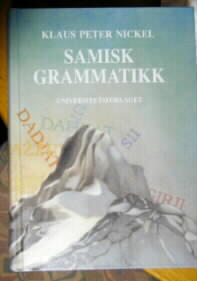
We moved to another room filled with personal computers and enjoyed PC games.
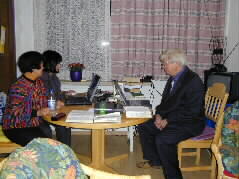
I remember that Mr. Klaus had once browsed my home page and E-mailed me on how to make sweet vinegary ginger. It was the trigger of our mail exchanges. Since then we exchanged many mails and I hoped to visit Arctic Tromsoe. Before my dream came true, Klaus graduated his work and returned Germany. Thanks to him and his friend Kaeko, we could visit Germany at last. We are very glad.


 This is one of his works, a grammar of Lappish. He completed it after eight years work when he used to be a high school teacher in Norway. He has already retired, but he still visits Tromsoe in Arctic Norway several times a year for his study.
This is one of his works, a grammar of Lappish. He completed it after eight years work when he used to be a high school teacher in Norway. He has already retired, but he still visits Tromsoe in Arctic Norway several times a year for his study.
















